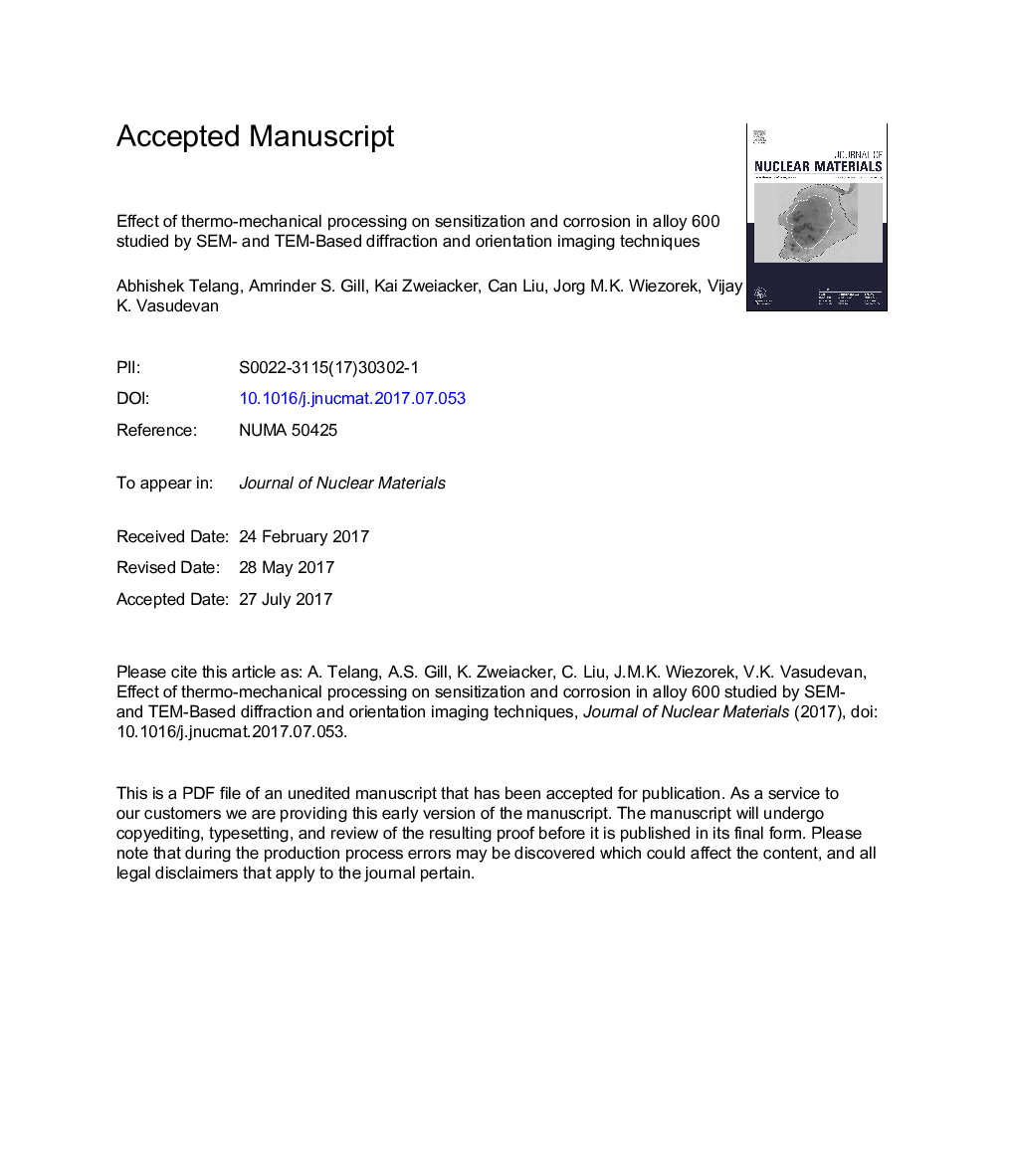| Article ID | Journal | Published Year | Pages | File Type |
|---|---|---|---|---|
| 7963226 | Journal of Nuclear Materials | 2018 | 32 Pages |
Abstract
In this study, we investigate the effect of thermo-mechanical processing (TMP) on the evolution of low coincident site lattice (CSL) grain boundaries (3 â¤Â Σ â¤Â 27) and thence on the precipitation behavior of carbides at various types of grain boundaries in Alloy 600. Detailed analysis of the microstructure using Electron Back-scattered Diffraction (EBSD) in the scanning electron microscope (SEM) as well as Precession Electron Diffraction (PED) and Energy Dispersive X-ray Spectroscopy (EDS) in the transmission electron microscope (TEM) has been used to study the effects of TMP on the precipitation of Cr carbides and Cr depletion. After TMP, the fraction of low-CSL grain boundaries is increased appreciably and the precipitation behavior of carbides is modified resulting in lower sensitization. The results showed that Σ3 boundaries were more resistant to carbide precipitation as compared with random high angle boundaries due to their lower surface free energy. Furthermore, the decrease in effective grain boundary energy of the microstructure after TMP resulted in lower Cr depletion and lower sensitization along grain boundaries.
Related Topics
Physical Sciences and Engineering
Energy
Nuclear Energy and Engineering
Authors
Abhishek Telang, Amrinder S. Gill, Kai Zweiacker, Can Liu, Jorg M.K. Wiezorek, Vijay K. Vasudevan,
